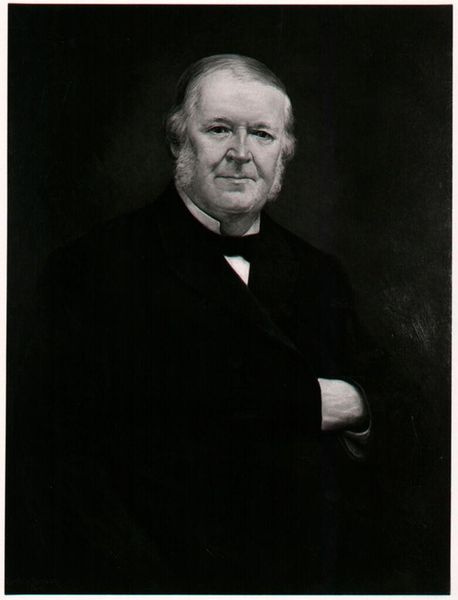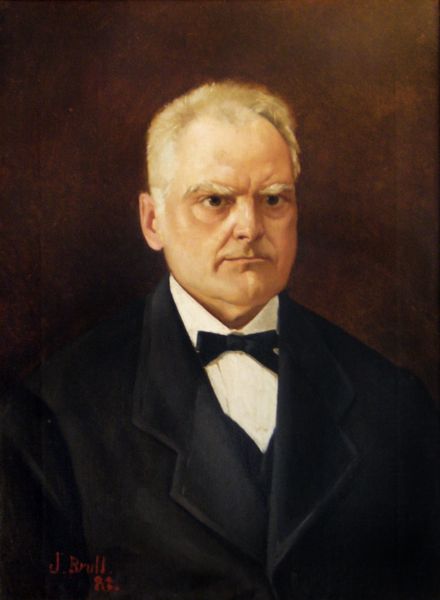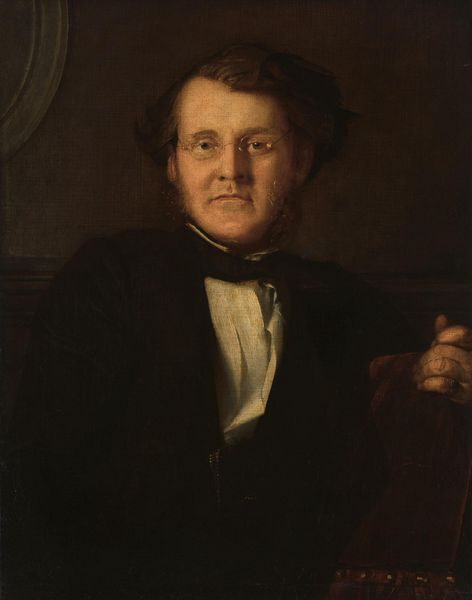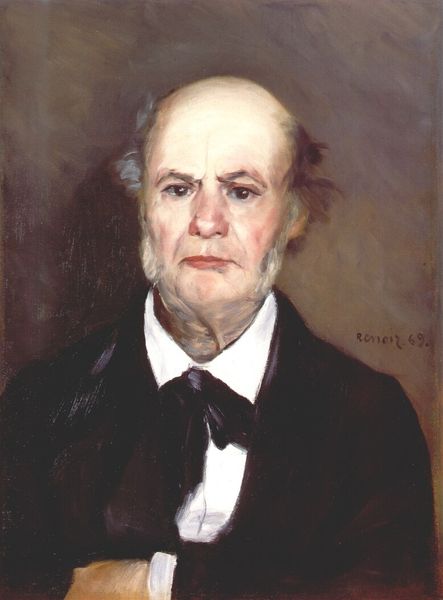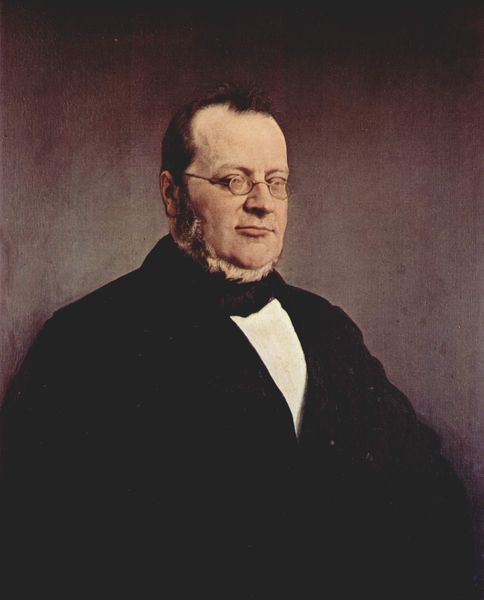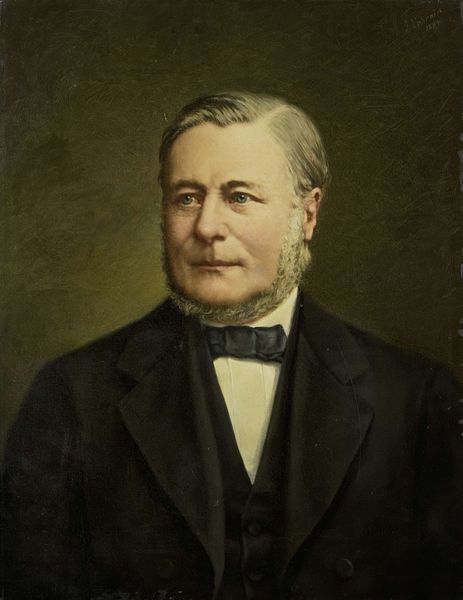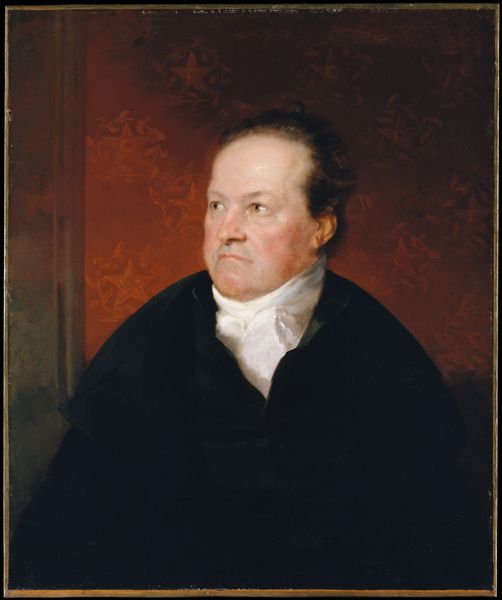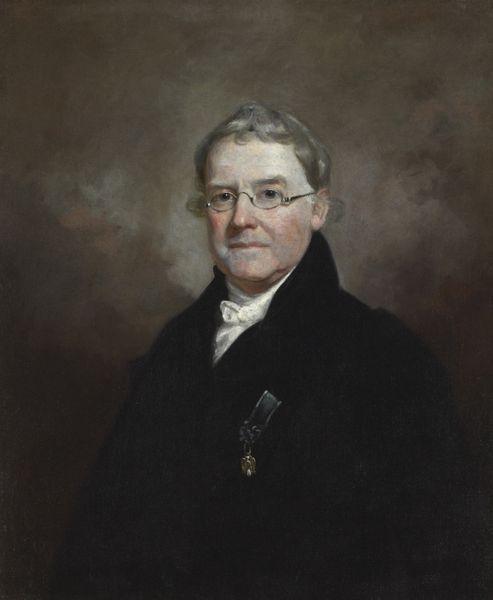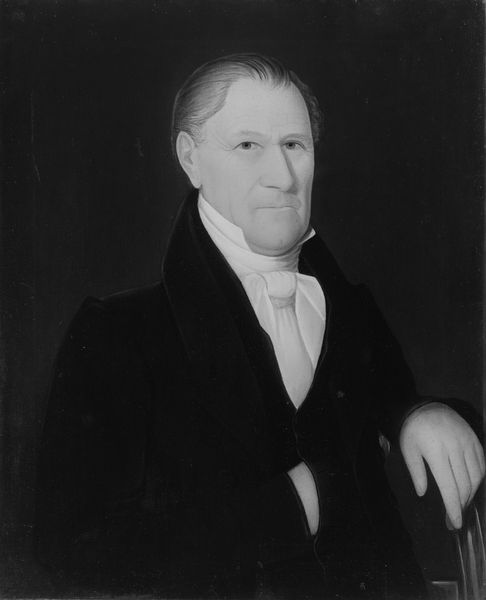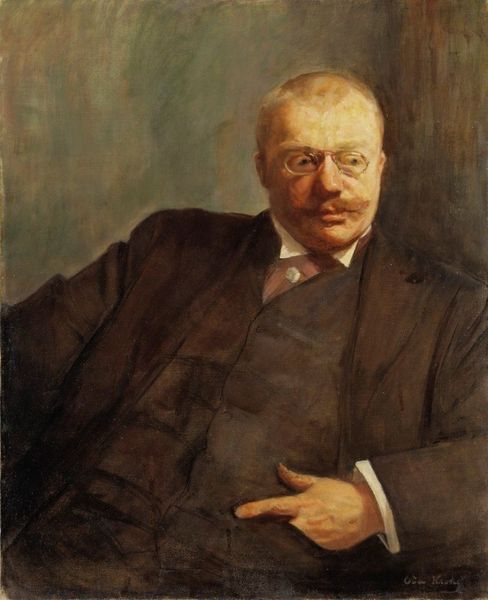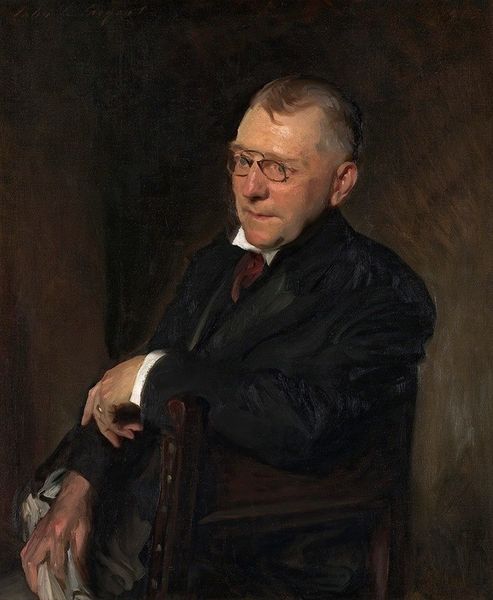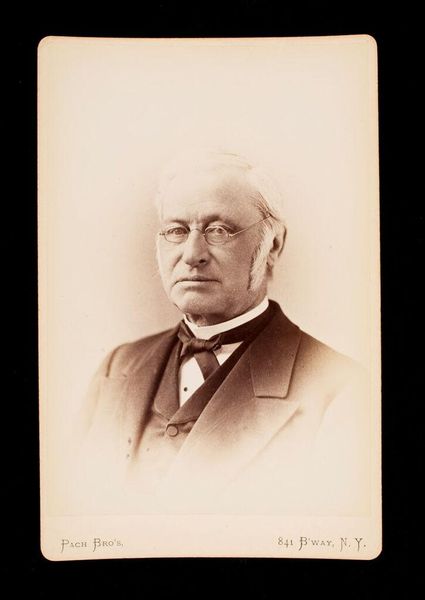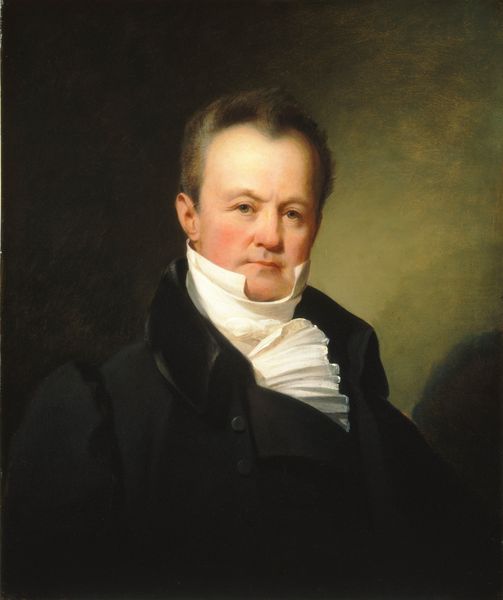
painting, oil-paint
#
portrait
#
figurative
#
portrait
#
painting
#
impressionism
#
oil-paint
#
genre-painting
#
academic-art
#
realism
Copyright: Public Domain: Artvee
Editor: This is Carolus-Duran's "Portrait de Jean-François Berthelier," painted in 1877. The subject's dark suit against the dark background really makes his face the focal point. What do you see in this portrait? Curator: I see a careful negotiation of power and representation during the late 19th century. While the portrait adheres to the conventions of academic art – a wealthy, white man rendered with skilled realism – it also subtly hints at the social tensions beneath the surface. Consider Berthelier’s slightly flushed complexion, his guarded expression. What might these details suggest about the pressures and anxieties of masculinity during this period of immense social change? Editor: So you're suggesting it's not just a straightforward depiction of a man, but maybe also a commentary on the roles he’s expected to play? Curator: Precisely. Think about the rapid industrialization and the rise of the bourgeoisie. Men like Berthelier were under enormous pressure to maintain their status and project an image of success. The portrait, therefore, becomes a site of performance where identity is both constructed and potentially destabilized. How does the artist use visual cues to suggest these tensions? Editor: Well, the detail in his face stands in contrast to the loose brushwork of his suit. Maybe it’s highlighting his individual character, separate from his social role? Curator: That’s insightful. And what about the lack of a specific setting? The dark background isolates him, perhaps suggesting a certain isolation or alienation, despite his apparent success. Editor: I hadn't considered that. It’s interesting to think about portraiture as more than just capturing a likeness, but also revealing the anxieties of the time. Curator: Exactly! By examining the intersection of artistic technique and social context, we can unlock a deeper understanding of both the artwork and the society that produced it.
Comments
No comments
Be the first to comment and join the conversation on the ultimate creative platform.
